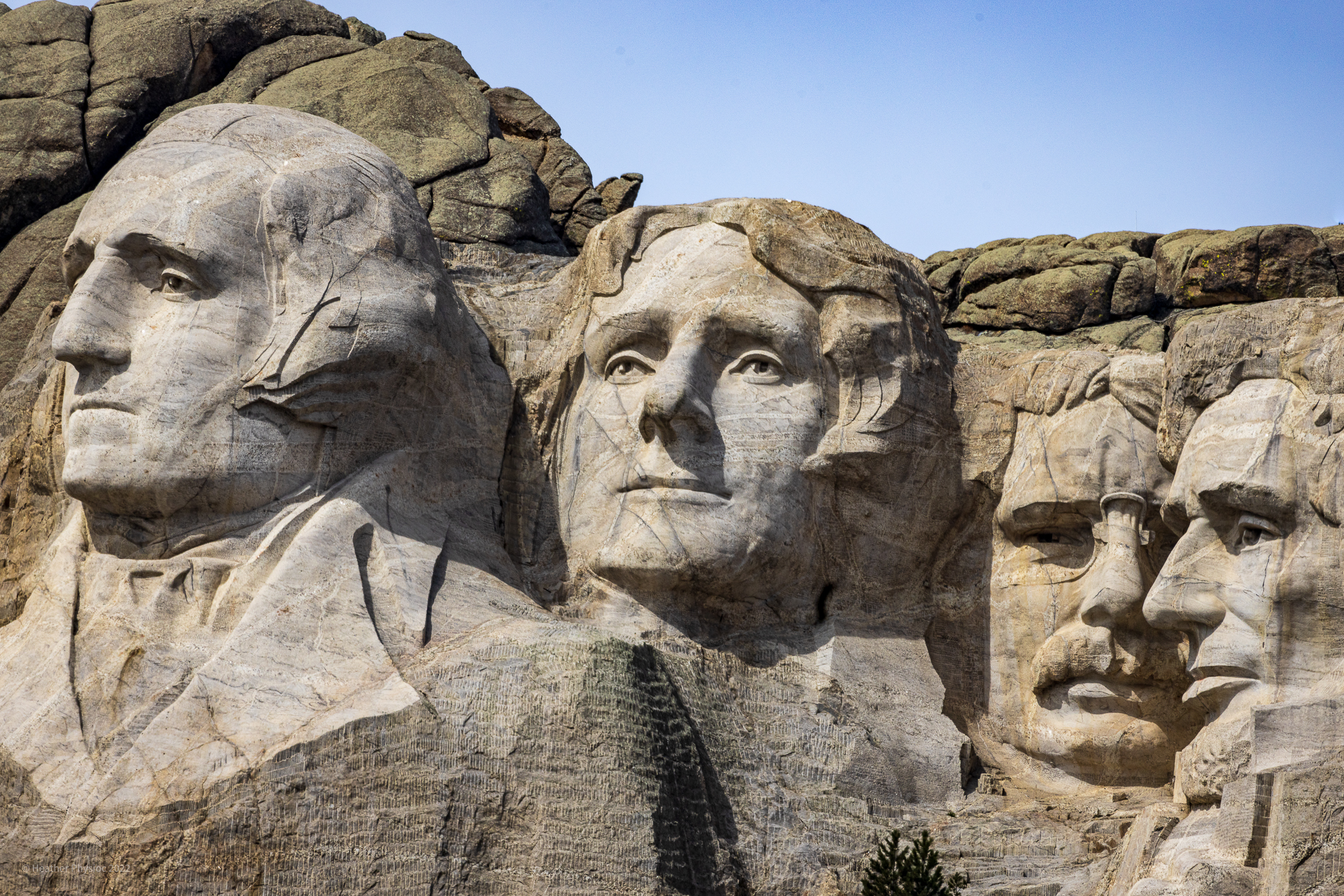We daydreamed about visiting Badlands area for years. We were drawn by the mystique of its wide open spaces, curious about its strange, striated western landscape. We were eager to discover its legendary herds of bison. In April, we finally set forth on our great Northern road trip with the dog in tow.

Western Kitsch
This part of South Dakota is the quintessential United States, perfectly suited to the quintessential American road trip. Dotted along Interstate 90 are giant, painted model dinosaurs, detours to presidential monuments, and signs to visit an old movie set turned into a tourist attraction.
Starting nearly 400 miles out from their destination are hundreds of gaudy and gimmicky hand-painted billboards for Wall Drug, a simple travel stop that in its 90-year history has exploded into a massive roadside destination that draws an estimated 2.2 million tourists per year. Call it Western Kitsch.
We arrived in Rapid City, South Dakota just as the sun was going down, after an 11-hour drive through Midwestern farm and ranch country. It’s the first of three destinations on a two-week long April road trip. We were greeted by our charming host and her dog Hayley, an aging golden retriever with a friendly grin.
The winds were rising and temperatures dropping. Thankfully, our quaint little rental was cozy and warm. It was furnished to the rafters with rustic details – hardwood and leather furniture, a wood-burning stove, antlers and throw pillows adorned with elk and bears.
A family of whitetail deer and a flock of turkeys call this mountainside loop home. They occasionally darted past the floor-to-ceiling windows and surprised the dog into a frenzy.
Black Hills Points of Interest
When we entered the region, we saw for ourselves how the Black Hills National Forest earned its name, dark emerald pines dotting the curves looming over the prairie. Progressing deeper and deeper into the Black Hills and arriving at the Badlands, the landscape becomes progressively more barren and unusual.

Badlands National Park
Going to South Dakota in April is rolling the dice with unpredictable weather at the change of the seasons. We visited Badlands National Park on the day with the least miserable forecast, but it was still incredibly windy, with regular gusts upwards of 35mph.

Scrubby brush and shrubs lean and stretch across the expanse, sweeping permanently to one side from the persistent winds common to the area. The bitter gusts never let up during our visit to South Dakota, at times reaching a blistering 50mph. It felt sharp on my face as I darted behind hills and hoodoos to block the wind and shoot photographs.
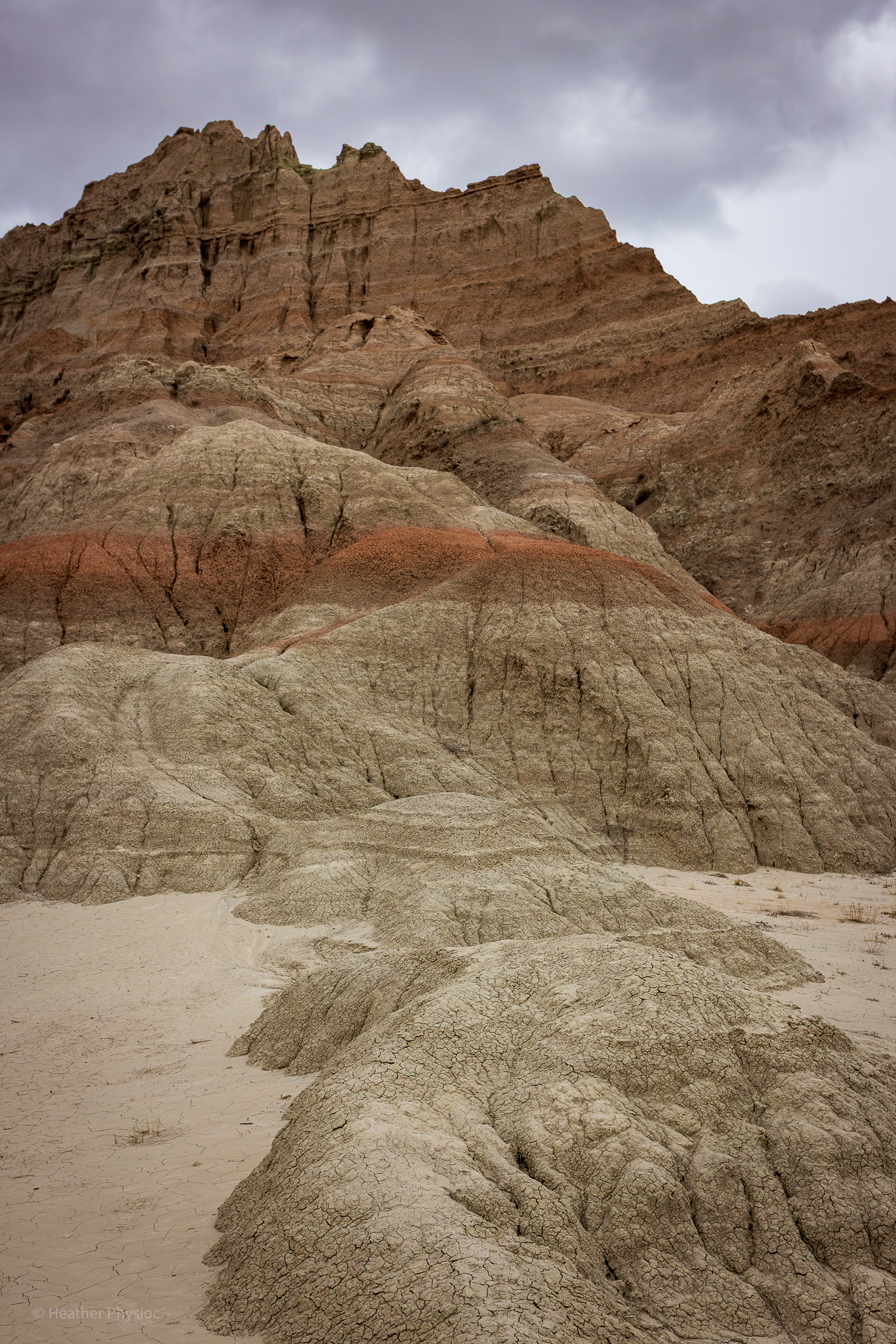
These weird and colorful geologic formations developed as the earth was deposited, eroded and shaped over the last 500,000 years.
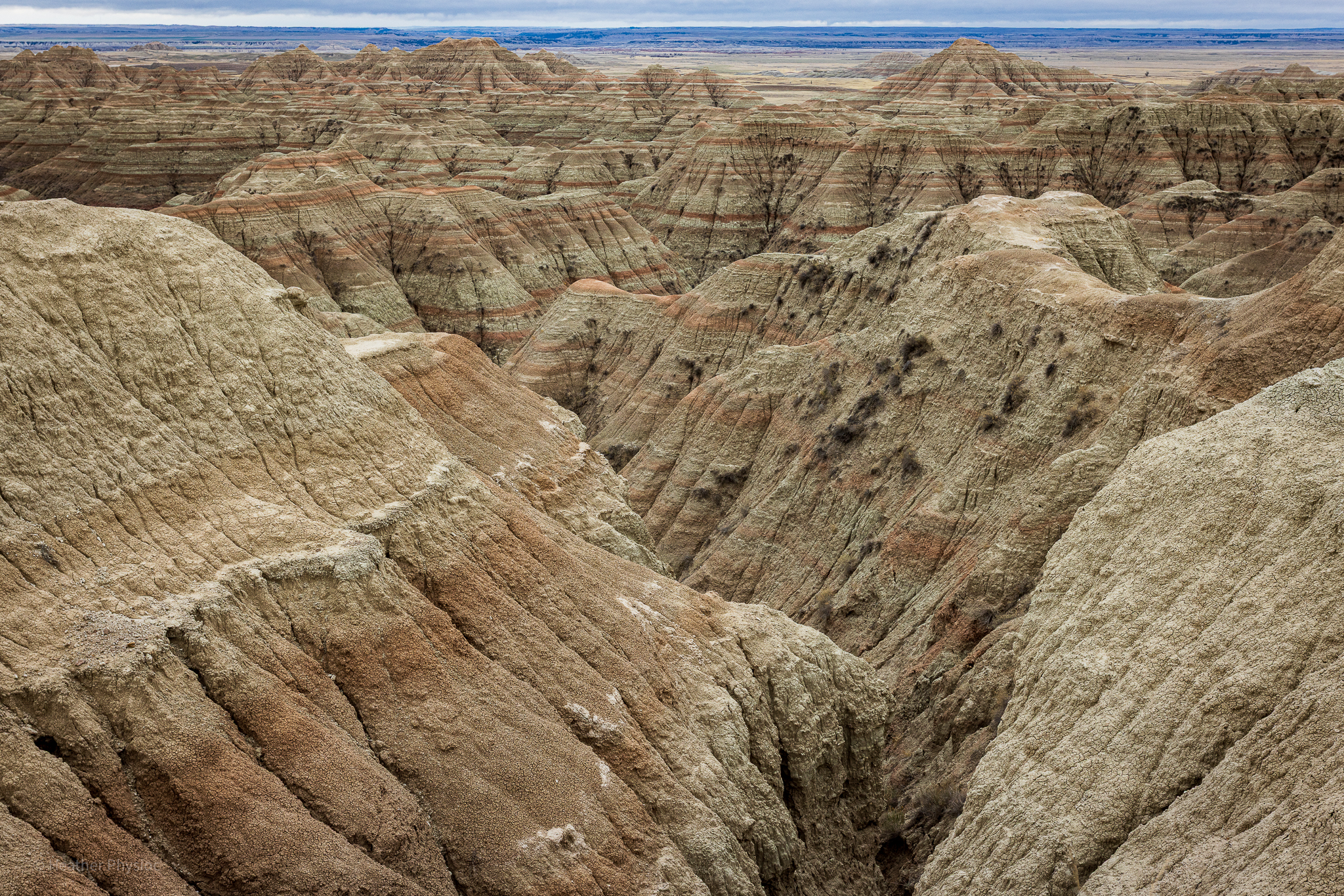
Softly sloping mounds of sedimentary rock repeat into the distance. Their stripes of contrasting greens and reds, whites and golds are curiously colorful. I imagined for a moment whether this could be what it’s like to explore the surface of Mars.
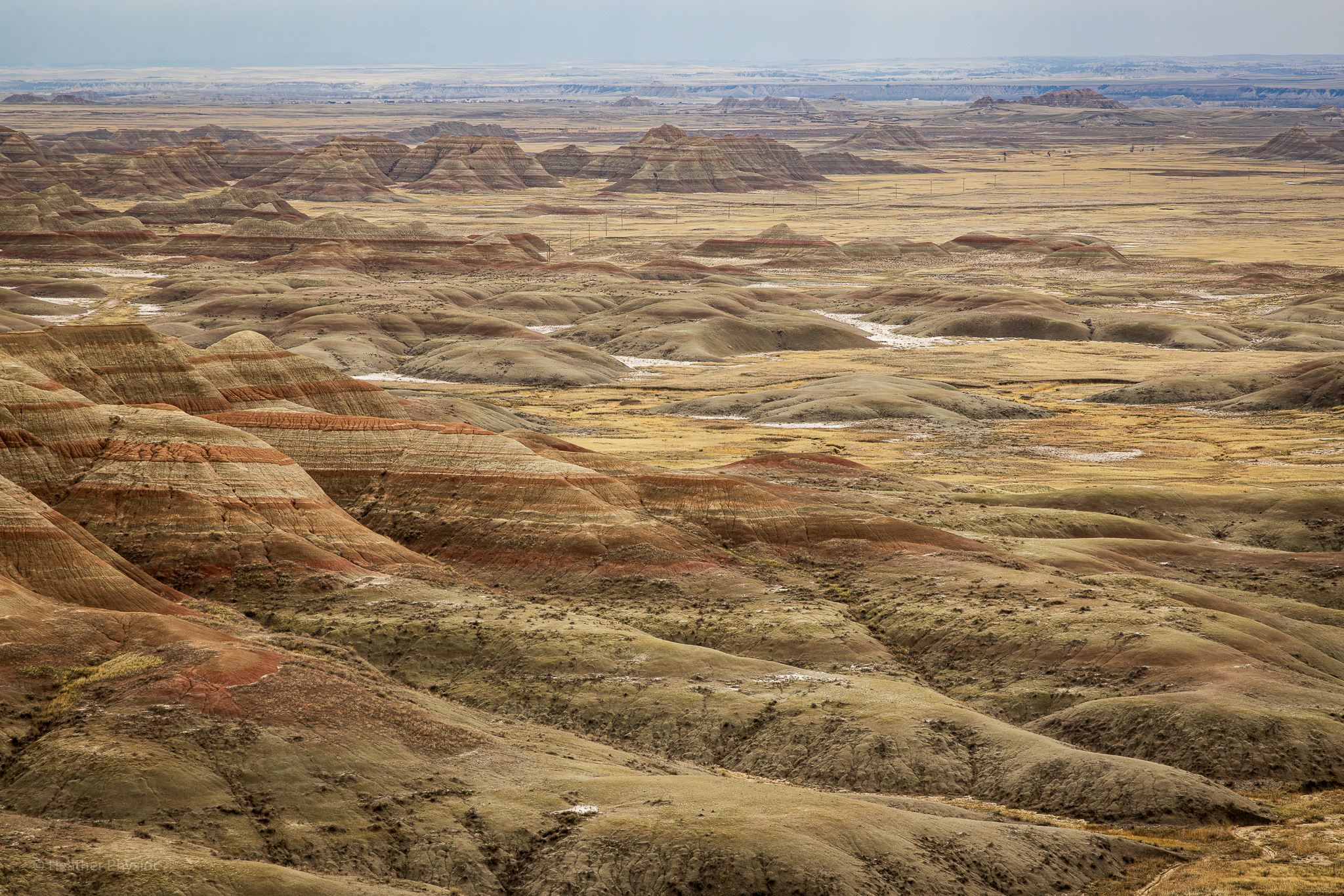
In some places, the clay-rich soil is delicately layered with delicate, paper-thin curls where small streams of water once flowed. They reminded me of the dried up Missouri creek beds we played in as kids in the summer.
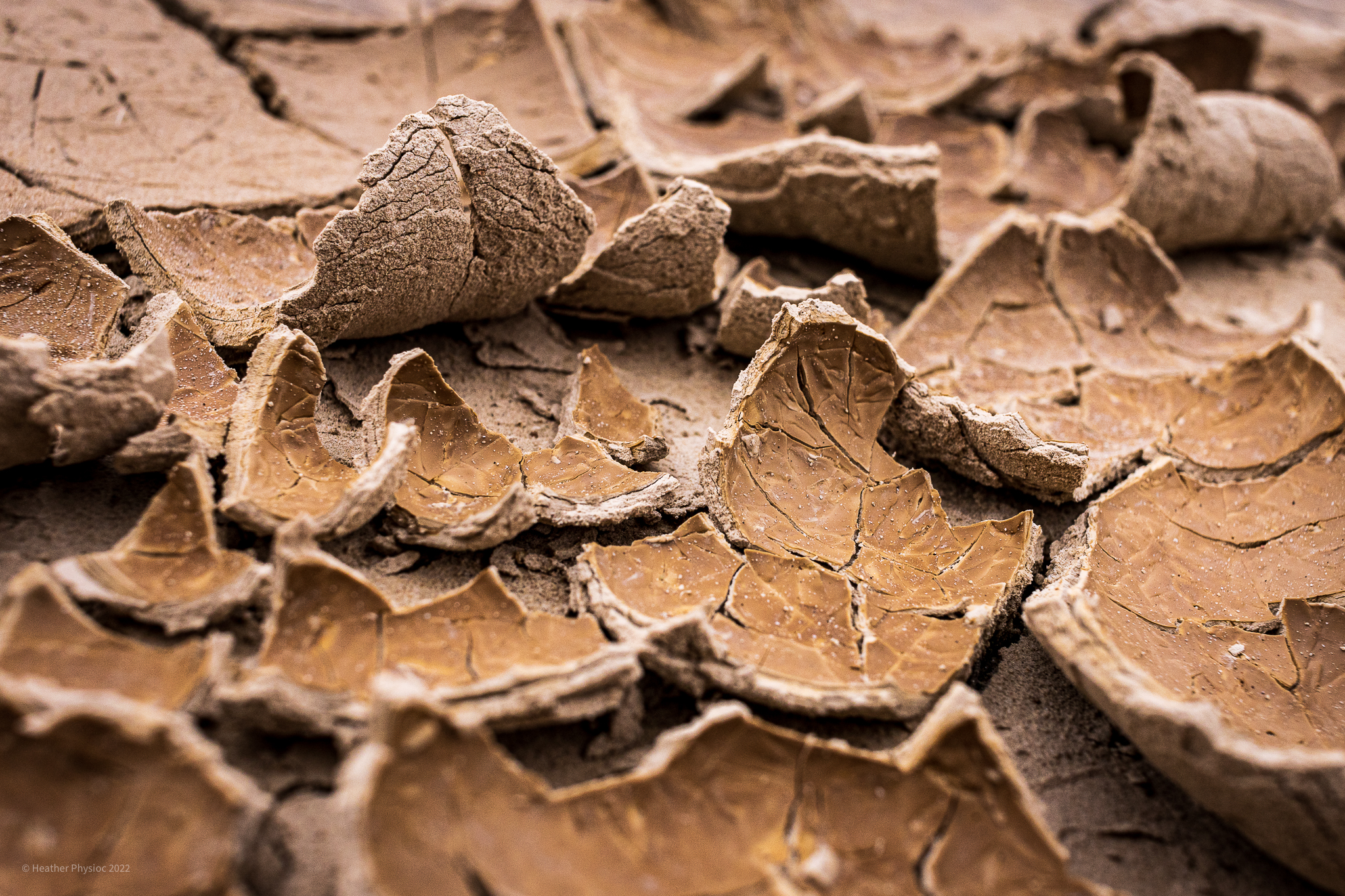
Custer State Park
Custer State Park houses one of the largest publicly-owned bison herds, with some 1,400 animals. It is truly an awesome feeling to be just feet from a herd of plains bison with spring calves crossing the road in front of you on the 18-mile Wildlife Loop Road through the park, which contains more than 70,000 acres.
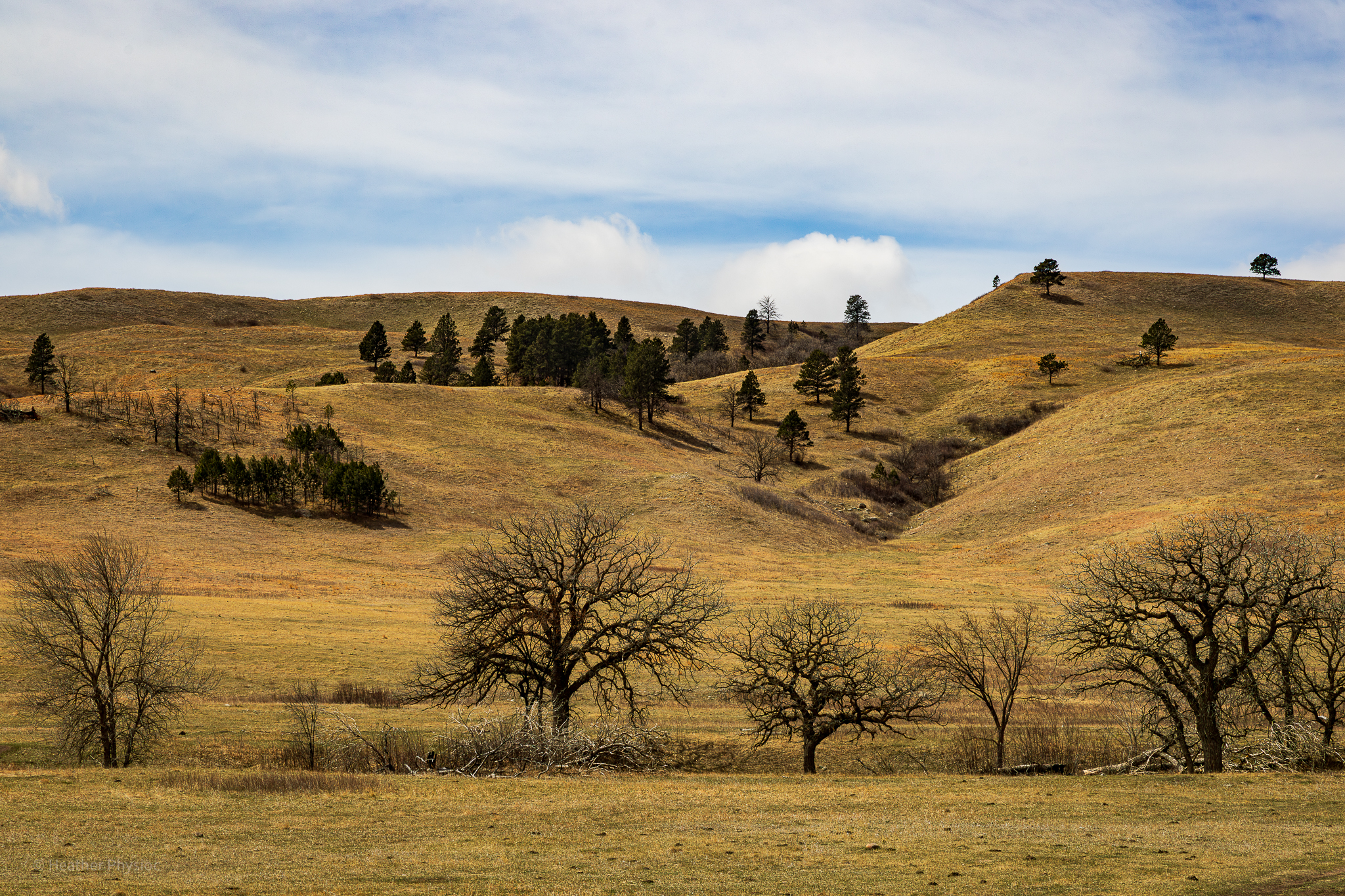
The bison’s story is one of resilience. The threatened animal struggled its way back from the brink of extinction, to become what is now America’s national mammal. These American icons played an essential role in the tribal cultures of numerous Indigenous peoples, and became the wild symbol of Theodore Roosevelt’s conversion to conservation upon exploring Yellowstone National Park for weeks.
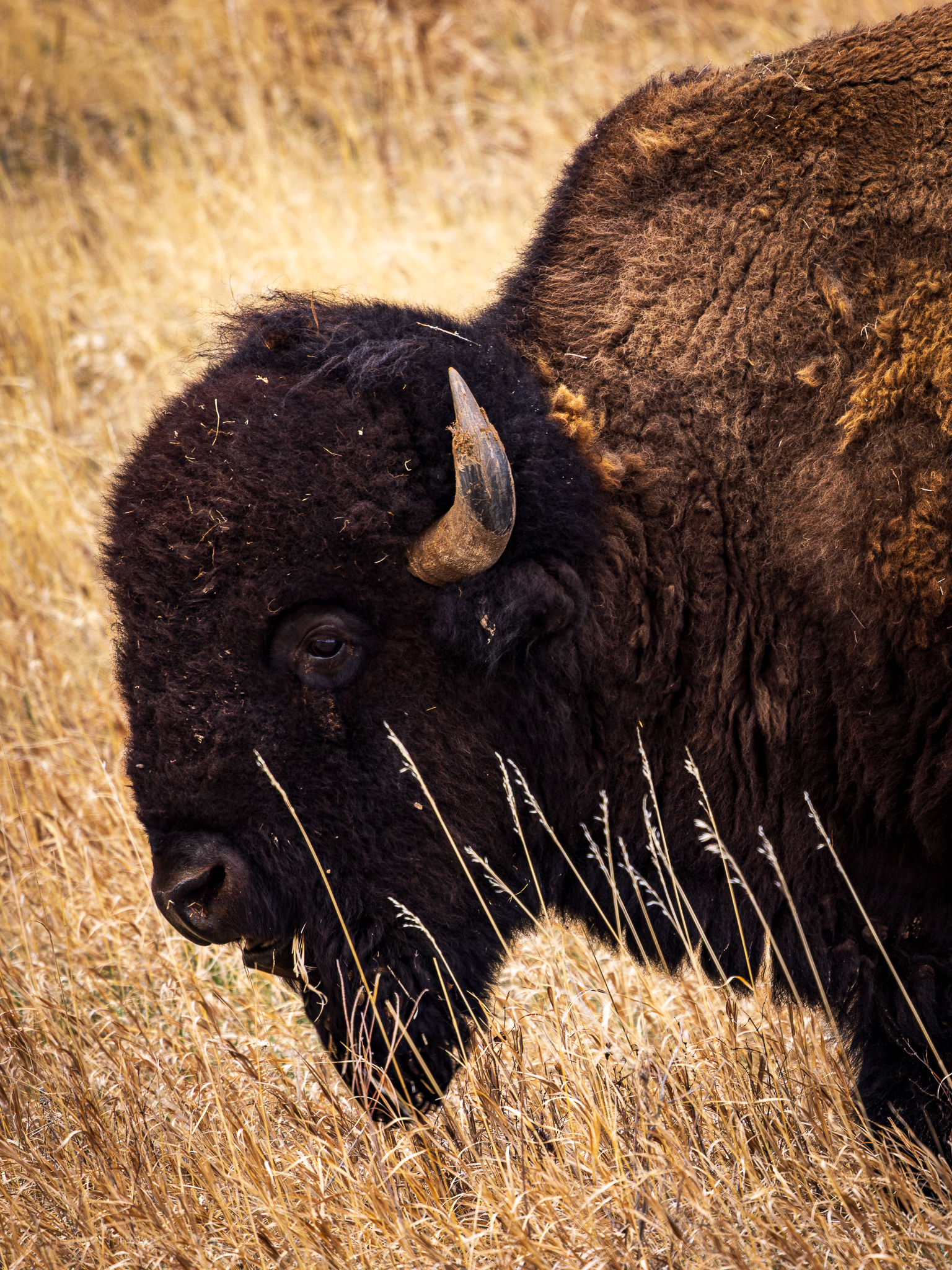
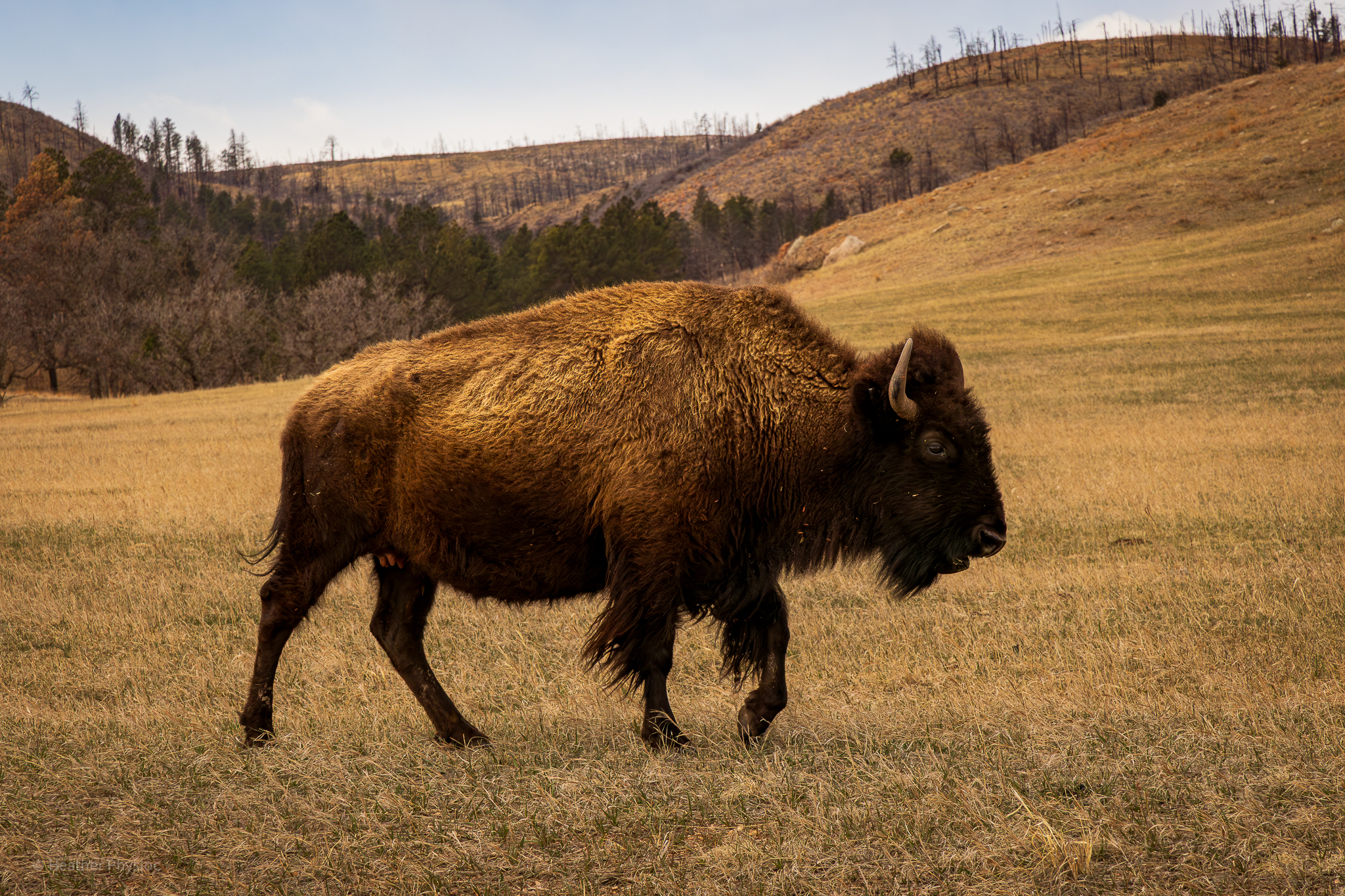
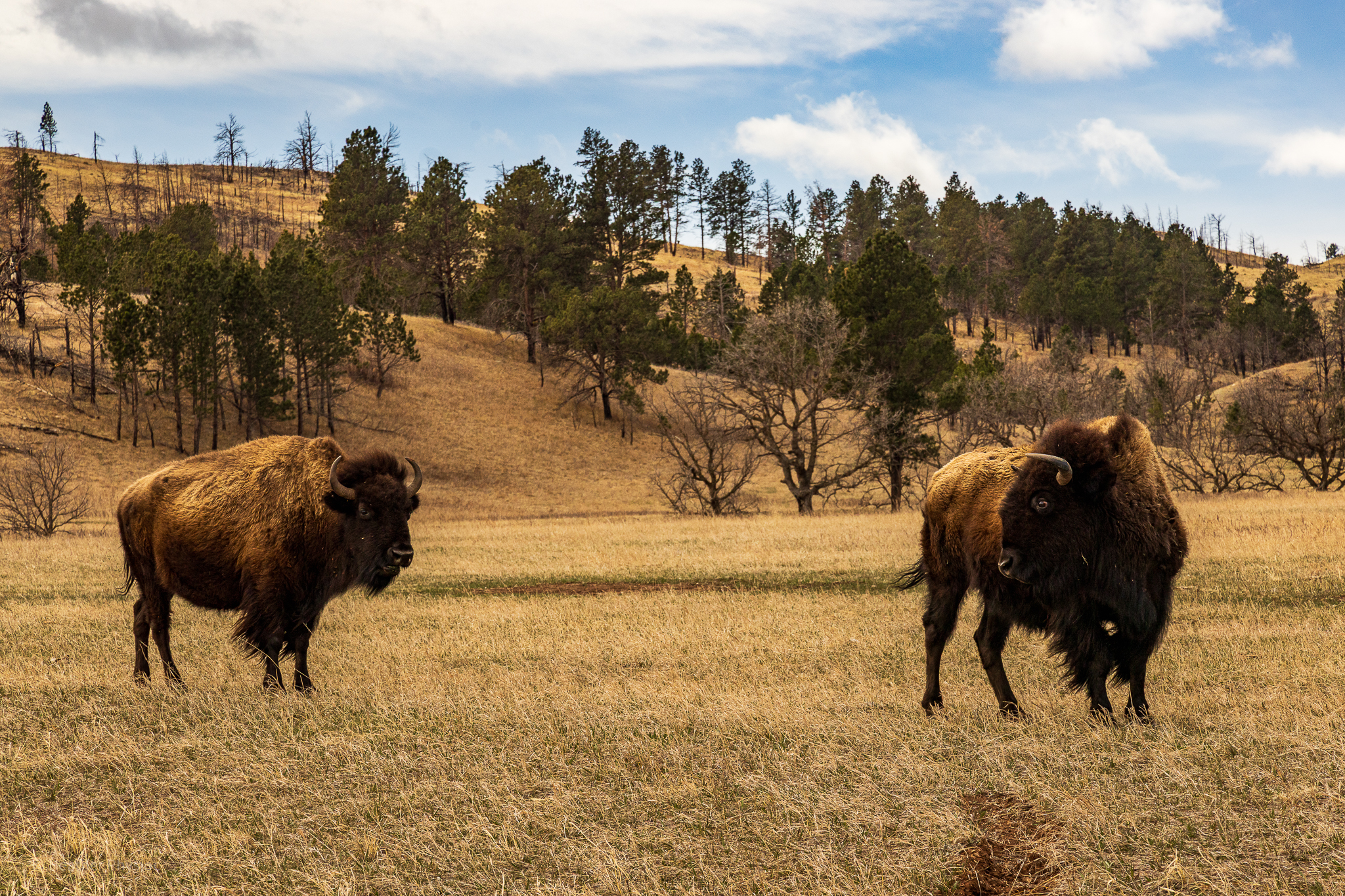
We saw numerous bison, as well as mule deer, prairie dogs and the occasional pronghorn. Rare is the luxury of such time and proximity to photograph incredible wildlife. It takes patience and persistence to get wildlife photographs worth looking at. And meanwhile, Poppy the Australian cattle dog mix was inside the car, positively losing her mind, shrilly whining in vain at the herds she could not herd.
The high winds kept us mostly in the car, but should I have the good fortune of returning to Custer State Park, I would love to explore the park more on foot via its hiking trails and take a dip in one of its five swimming-friendly lakes. You can also visit in the fall to witness their annual Buffalo Round-Up, during which the herd is gathered and tallied in preparation for the culling that balances the size of the herd with available food to forage in the park.
Mount Rushmore
Despite my disillusionment with our presidential history, Mount Rushmore is still an impressive site to see, and it was easy and fun to photograph from the car on a cold, blustery day. I enjoyed cruising the winding mountain roads on the sunniest day yet on our trip.
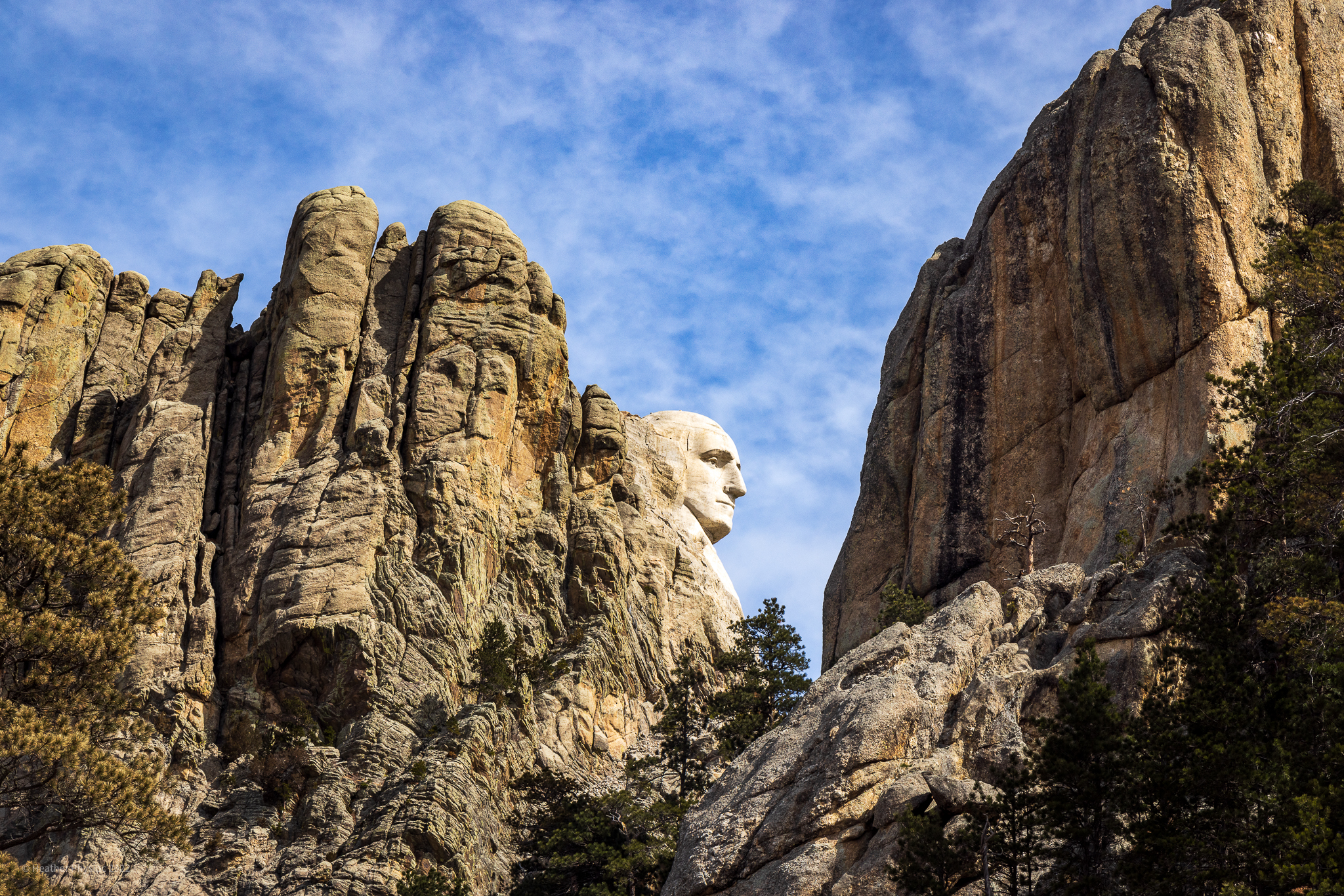
It’s an incredible feat to carve four Presidents’ heads 60 feet tall in the granite of a mountain. It features Presidents George Washington, Thomas Jefferson, Theodore Roosevelt and Abraham Lincoln, to represent the birth, growth, development and preservation of the United States, according to the National Parks Service.
I learned that South Dakota historian Diane Robinson originally wanted the monument to feature other icons of the American West, like explorers Lewis and Clark and their Shoshone guide Sacagawea, hunter and showman Buffalo Bill Cody, or Oglala Lakota chiefs Red Cloud and Crazy Horse.
Crazy Horse Memorial & Controversy
We also saw the Crazy Horse Monument – perpetually in progress since 1948 – from a great distance. We had Poppy in the car, so had to skip the visitors center where one can learn more about its history, and the history of Crazy Horse himself.
The memorial, depicting Oglala Lakota warrior Crazy Horse riding on horseback. is being carved into Thunderhead Mountain on privately owned land. It was designed by Polish-American sculptor Korczak Ziolkowski, was commissioned by Lakota Chief Henry Standing Bear, and is now operated by the Crazy Horse Memorial Foundation.
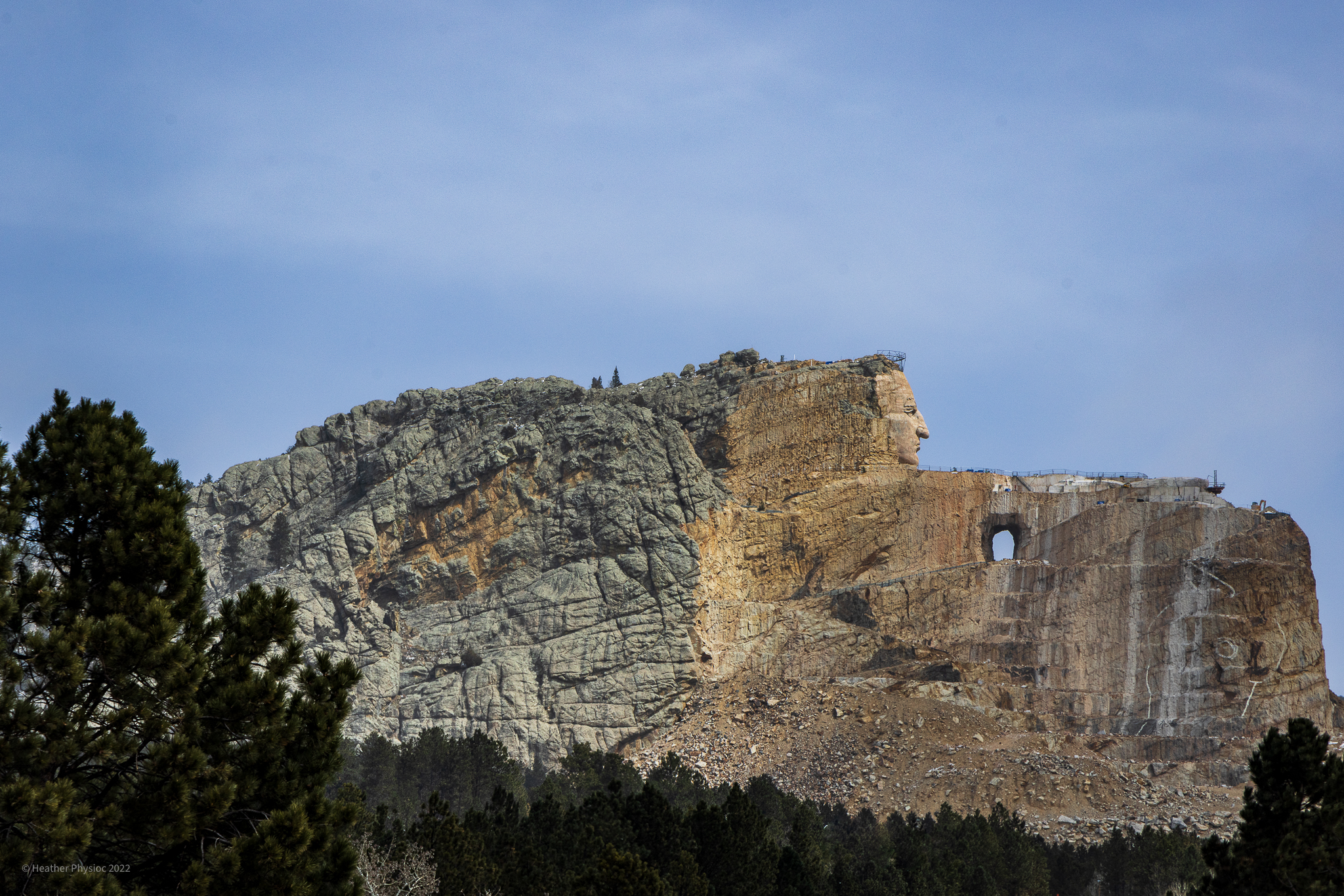
As with many monuments, it’s mired in controversy. It is reported that Crazy Horse resisted being photographed, and he was intentionally buried in a hidden location, suggesting he may not have wished to be represented in such a prominent, public way, his likeness blasted out of the side of a mountain. Some of Crazy Horse’s descendants say that should never have been been initiated, because family members were not consulted, as is customary in Lakota culture. It has also been in progress for three-quarters of a century despite millions of dollars in funding from private donations and entrance fees.
Leaving the Black Hills
When we departed Rapid City on our final day to head west across Montana, we felt lucky that we had just dodged the blizzard passing through the northern U.S. Just a few hours later, we were dodging icy patches of highway with snow swirling around us, eventually reducing our visibility to just one car in front of us in the middle of the day.
After being stuck behind a mile or more of semi trucks and giant pickups in my tiny Prius for nearly an hour, we learned the rural highway was closed from heavy snowfall from the night before. We would have to backtrack several hours through Wyoming and reroute.
One silver lining of the stressful setback – the detour took us past the incredible Devil’s Tower National Monument, a surreal and mysterious monolith that took my breath away when it appeared on the horizon. I had never seen anything like this towering igneous butte, but it was immediately clear how this unusual geological phenomenon became the eery backdrop of Close Encounters of the Third Kind.
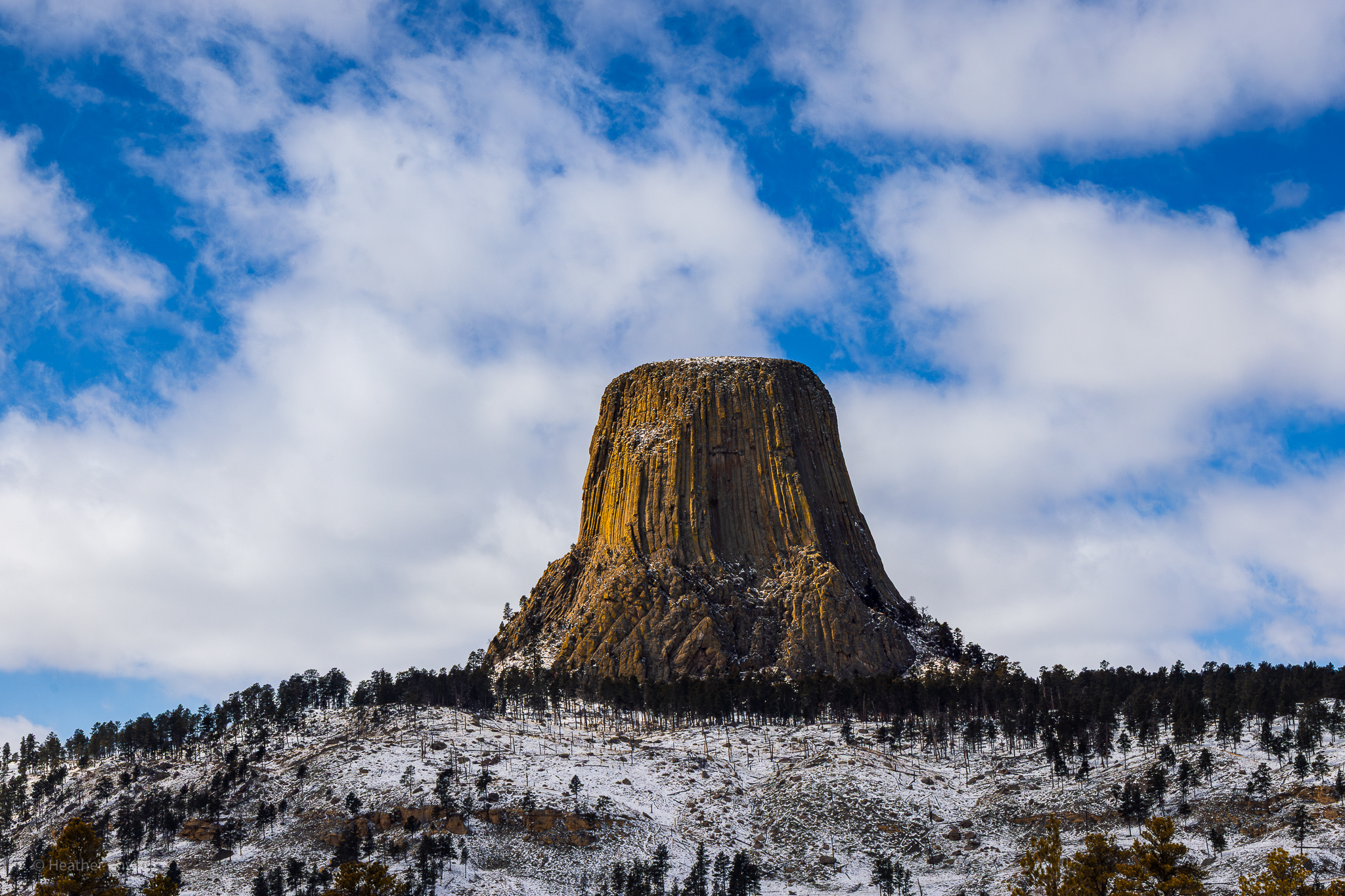
From that point forward, the drive became far more manageable with clearer road conditions. It seemed we would make it to our destination at the foot of Emigrant Peak in Montana safe and sound, albeit a little late.
But that’s not what happened.
[To be continued…]

